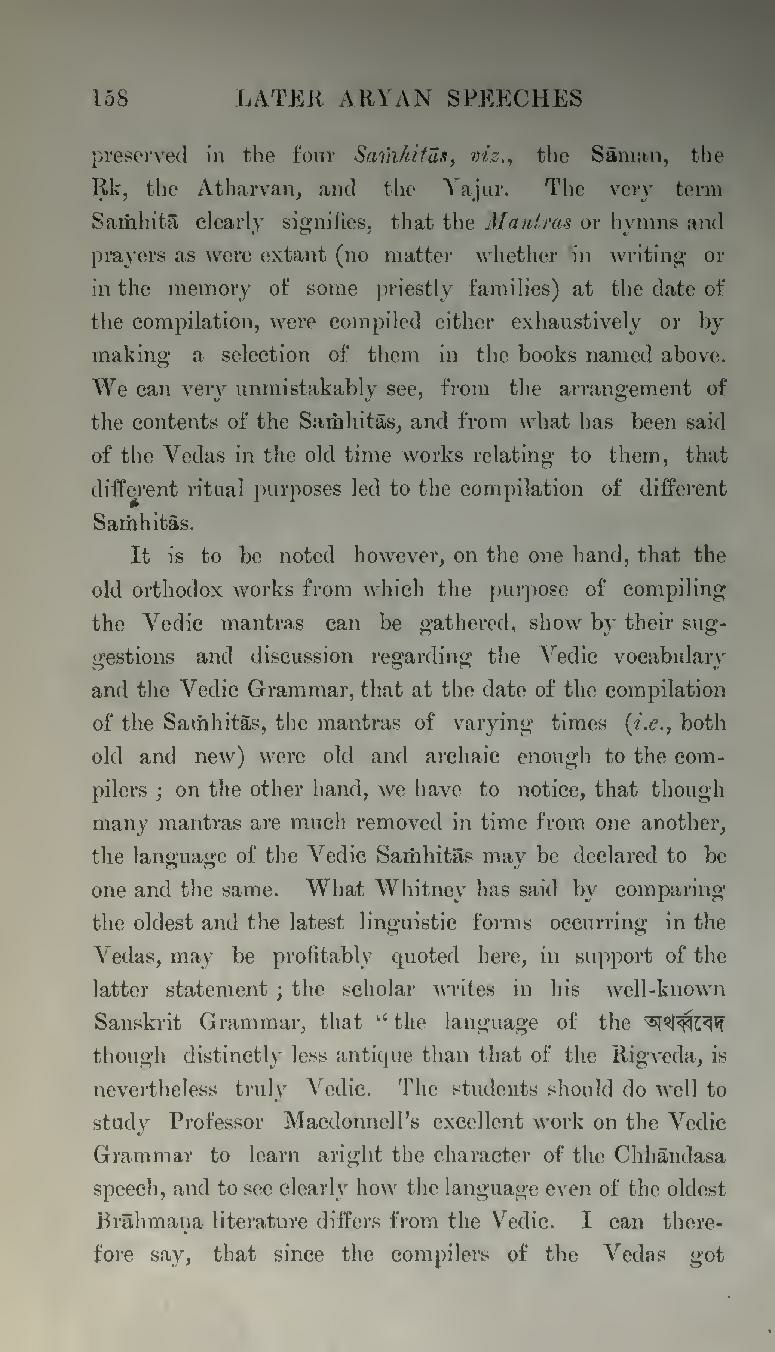preserved in the four Saṁhitās, viz., the Sāman, the Ṛk, the Atharvan, and the Yajur. The very term Saṁhitā clearly signifies, that the Mantras or hymns and prayers as were extant (no matter whether in writing or in the memory of some priestly families) at the date of the compilation, were compiled either exhaustively or by making a selection of them in the books named above. We can very unmistakably see, from the arrangement of the contents of the Saṁhitās, and from what has been said of the Vedas in the old time works relating to them, that different ritual purposes led to the compilation of different Saṁhitās.
It is to be noted however, on the one hand, that the old orthodox works from which the purpose of compiling the Vedic mantras can be gathered, show by their suggestions and discussion regarding the Vedic vocabulary and the Vedic Grammar, that at the date of the compilation of the Saṁhitās, the mantras of varying times (i.e., both old and new) were old and archaic enough to the compilers; on the other hand, we have to notice, that though many mantras are much removed in time from one another, the language of the Vedic Saṁhitās may be declared to be one and the same. What Whitney has said by comparing the oldest and the latest linguistic forms occurring in the Vedas, may be profitably quoted here, in support of the latter statement; the scholar writes in his well-known Sanskrit Grammar, that "the language of the অথর্ব্ববেদ though distinctly less antique than that of the Rigveda, is nevertheless truly Vedic. The students should do well to study Professor Macdonnell's excellent work on the Vedic Grammar to learn aright the character of the Chhāndasa speech, and to see clearly how the language even of the oldest Brāhmaṇa literature differs from the Vedic. I can therefore say, that since the compilers of the Vedas got
